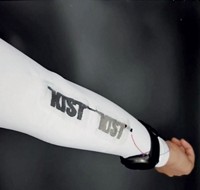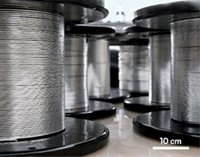Advertisement
Grab your lab coat. Let's get started
Welcome!
Welcome!
Create an account below to get 6 C&EN articles per month, receive newsletters and more - all free.
It seems this is your first time logging in online. Please enter the following information to continue.
As an ACS member you automatically get access to this site. All we need is few more details to create your reading experience.
Not you? Sign in with a different account.
Not you? Sign in with a different account.
ERROR 1
ERROR 1
ERROR 2
ERROR 2
ERROR 2
ERROR 2
ERROR 2
Password and Confirm password must match.
If you have an ACS member number, please enter it here so we can link this account to your membership. (optional)
ERROR 2
ACS values your privacy. By submitting your information, you are gaining access to C&EN and subscribing to our weekly newsletter. We use the information you provide to make your reading experience better, and we will never sell your data to third party members.
Materials
Stretchy, see-through touch panel made from salt-packed hydrogel
Conductive material operates even when pulled to 1,000% its original size
by Bethany Halford
August 21, 2016
| A version of this story appeared in
Volume 94, Issue 33
Touch panels of the future will be a lot like Olympic gymnasts—flexible, stretchy, and resilient. With these properties, touch panels can hug the human form like a leotard, letting us wear electronic devices rather than stick them in our pockets, purses, or briefcases. To date, however, most touch panels have been built with materials that resist stretching, such as indium tin oxide and carbon nanotubes. Researchers at Seoul National University now report a transparent touch panel that can be stretched to 10 times as large as its original area without losing functionality (Science 2016, DOI: 10.1126/science.aaf8810). The superstretchy, see-through device is made of a polyacrylamide hydrogel containing lithium chloride salts. Because of the high water content of the hydrogel, the salt dissolves and acts as an ionic conductor. The scientists who developed the technology, led by Jeong-Yun Sun, made an arm-hugging touch panel and used it for writing and playing video games. Perhaps by the time the 2020 Olympics roll around, we’ll be able to watch gymnasts write notes to their fans during downtime with touch panels embedded in their leotards.




Join the conversation
Contact the reporter
Submit a Letter to the Editor for publication
Engage with us on Twitter